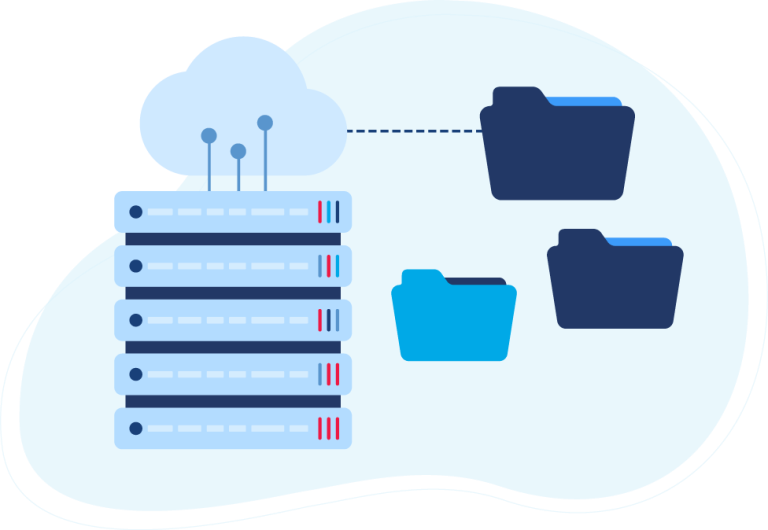Based on VL OMNI’s many years of data integration experience working with Merchants, we’ve seen a number of mistakes and methods that Merchants have implemented data integration unsuccessfully.
Let’s identify the most common data integration mistakes and how to avoid these pitfalls on your journey of scaling with agility through integration.
Jump to the Top 8 Data Integration Mistakes To Avoid
1. Weak Internal Systems and Infrastructure
4. Work-Arounds Are Part of Your Everyday Toolbox
5. Shiny and New Is Better than Plain and Functional
6. Not Researching Before Implementing An Integration Solution
1. Weak Internal Systems and Infrastructure
The old adage of “you’re only as strong as your weakest link” holds true in so many circumstances. Data integration can support your business to scale and stay agile despite rapid growth, complexity and high-volume sales. Thus, integration will not improve weak internal systems and infrastructure.
However, don’t expect integration services to be your magic fix if your current technology stack sucks.
Delaying upgrading your systems and infrastructure like your ERP, WMS or eCommerce platform is a ‘save now, pay triple later‘ mentality. While you may save in the present, you will pay for the delay in the future as the upgrade will be a larger jump. Being comfortable with a certain system should not be your full stop in looking for something with increased functionality and modern API’s.
As a system gets older, it becomes less nimble. Make sure you don’t stay with old technology just because it’s what you know! Invest in the right technology for your business to grow. This is a key step that your business can take to prepare your business for the unknown future and changes in the market.

2. Weak Technical Partners
A successful integration includes your business having the right suite of both programs and partners. You need to have a strong network of partners to support you when you have questions, feedback, or hit road bumps.
Having strong technical partners to lean on and reach out to for resources will only make you smarter and savvier in your endeavors and business. Invest in the right partners for your business, and ask for their advice!
VL OMNI partners with the best agencies, technology solutions, and consulting firms in eCommerce. As a Shopify Plus Partner, we only work with the best in the industry to help you take your business to the next level.
3. Manual Processes Persist
If you’re still doing manual processes like copying and pasting data from one application to another, your integration solution isn’t doing its job.
You’ve likely adopted a plug-and-play solution when it wasn’t the best fit, partnered with the wrong integration specialist, or even worse – tried to do it yourself.
Symptoms of an improperly integrated system go deeper than just having to occasionally type in an entry that didn’t transfer properly between two applications. It means that your entire business does not have a continual flow of data!
This is true even if only 10% of your system isn’t integrated properly. Therefore, there is no central data management. Things won’t move the way they would in a completely and properly integrated system, leaving your business vulnerable to costly errors and more.
Identify the right integration partner to help with your integration needs
4. Work-Arounds Are Part of Your Everyday Toolbox
If you have implemented your chosen integration solution but it still hasn’t removed your need for work arounds, either perpetuating previous work-arounds or creating new ones, you’re not integrated. To reiterate what we discussed in mistake #3, if you are only 90% integrate, you are not integrated at all.
Work-arounds are headaches. For your business, your partners, and your clients. To you, this may seem like an inevitable part of the business and a component of your integration solution, but those workarounds are costing you money! Plug the leak and reevaluate your integration choices.
5. Shiny and New Is Better than Plain and Functional
A shiny and new integration solution, application, or really anything doesn’t mean that it’s better. Remember Coke, New Coke, and Coke Classic? There are times when the plain-old recipe that people have loved for decades still works best.
The same goes for integration solutions. Because you heard on the street that Product X can resolve all your integration issues and wash your car too! Doesn’t mean it’s a better solution than a plainer alternative that is functional and has been tested by many to be the best solution available for your business. Be skeptical of integration solutions that claim to do everything and the kitchen sink. Something’s had to have given somewhere else, and it’s usually the quality of the service or integration Connectors itself.
Our best recommendation is always to do your research – speak to experts who have experience and consult on your project before had, in order to make a well-informed decision.
6. Not Researching Before Implementing An Integration Solution
Trying to piece together an integration solution from bits and pieces of various plug-and-play solutions is a nightmare of a way to try and achieve total integration.
We recommend strategic consultation with experts who will take time and understand your business processes. Don’t immediately jump on a solution that is the cheapest, and satisfies only a part of your integration goals. Your integration solution should fit your business and its unique business rules, do not force our business to change to fit a boxed solution.
7. DIY Code
DIY code is another workaround that is symptomatic of an improperly or not fully integrated solution. If you have to use multiple code DIY to fulfill one action, bad news: your overall business processes are not in good shape. When people refer to “DIY code,” they often mean that the person who wrote it doesn’t have a lot of experience or knowledge. This can cause problems down the road if the code breaks or the person who wrote it leaves the team.
We recommend a managed integration service provider. VL OMNI handles integration projects from initial design and implementation of a solution to maintenance and new partner bordering. A managed service approach reduces the need for any DIY code as it takes your business’s rules into account when designing a solution.
8. Not My Responsibility!
Often there is no champion within the company to take responsibility for the systems, applications, and/or integration solution on the Merchant’s end. If your company is putting inaccurate data into the integration system, don’t expect to get anything other than inaccurate data out.
An internal champion for the system in your business can make all the difference. Someone who understands the system, and is willing to work with your integration partner to sort out any kinks. Integration providers will bend over backwards to help Merchants but in the end, the responsibility of data cleanliness and accuracy is the Merchant to ensure integration success.
Your Integration Partner Is Your Partner
Avoiding these top 8 integration mistakes is essential to creating an environment where business integration processes create agile and scalable growth.
Your integration partner is your partner. Partnerships work both ways and meeting them halfway by avoiding the above integration mistakes. Work together with your partner towards the common good of your business. If you’ve selected a potential integration partner who cares and whom you trust, listen to their advice when they try to make their recommendations.
Find an integration company that has control over the integration process. This will equal a better output for you. Entrust your company with an expert integration partner. You’ll thank yourself for it later.
 D365 Business Central
D365 Business Central Netsuite
Netsuite



